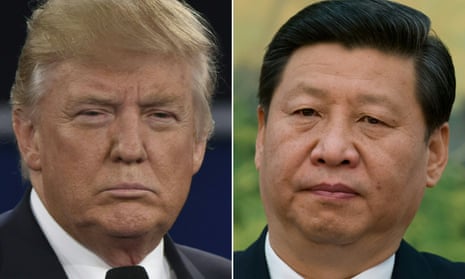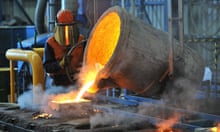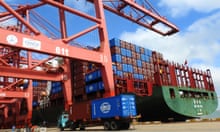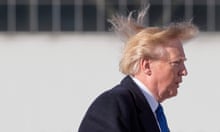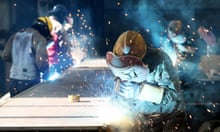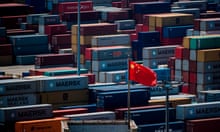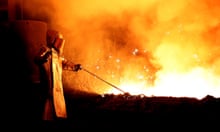After firing the opening shots of a trade war, China and the US have entered what is likely to be a protracted standoff as they jockey to win concessions from each other and avoid hurting their respective economies.
Eleven hours after the White House announced a list of 1,333 Chinese imports to be subject to punitive tariffs of 25%, China responded in kind with a list of about 106 American products, including key US exports to China, such as soya beans, cars and aircraft. Both sides are targeting about $50bn (£36bn) in imports from each other.
While the announcements appeared to raise the chances of a full-blown trade war between the world’s two largest economies, both sides have left room for manoeuvre. The US tariffs will not come into effect until after a public comment and consultation period that should take about two months.
A public hearing will be held on 15 May for businesses to voice their concerns, and 22 May is the final day for comments. After that, the White House will have 180 days to decide whether to continue. China, meanwhile, has said implementation of its tariffs will depend on the US.
On Wednesday, the White House’s economic adviser, Larry Kudlow, said he believed China would back down and “play ball”, and the recent trade actions were just proposals. “Nothing concrete has actually happened,” he told Fox News. The US commerce secretary, Wilbur Ross, told CNBC that “even shooting wars end with negotiations”.
In China, the vice-finance minister, Zhu Guangyao, told reporters on Wednesday: “Both sides have put their lists on the table … Now it is time for negotiations.”
Investors seem to believe a deal can still be reached. In Asia, the MSCI’s broadest index of Asia-Pacific shares aside from Japan rose 0.5%, while the Nikkei gained 1.5%. Markets in China, Hong Kong and Taiwan were closed on Thursday for the Tomb-Sweeping holiday.
Markets recovered on Wednesday after stocks initially fell following China’s announcement. The Dow and S&P 500 closed 1% and 1.2% higher, the Nasdaq Composite gained 1.4%.
The two sides have already been in talks. China’s economic tsar, Liu He, has spoken over the phone with the US treasury secretary, Steven Mnuchin, who is reportedly considering a trip to Beijing.
Observers on both sides will be watching closely when China’s president gives opening remarks on Sunday at the Boao Forum for Asia, the country’s version of Davos.
Negotiations are expected to be difficult. Xi Jinping, who recently began a second term as president, has built his reputation and legacy on strong leadership. Similarly, for Donald Trump, being tough on China is a cornerstone of his administration.
In China, some have called for a tougher stance. An editorial on Thursday in the state-run tabloid Global Times said people in China increasingly believed Beijing should “knock some common sense into the US government”. It added that in the event of a trade war, China could reduce the dominance of the dollar.
China holds about $1.17tn in American treasuries. When asked if Beijing would consider using its treasury holdings against the US, Zhu said China was a responsible investor and the decision of whether to have more or fewer US treasury bonds should be decided by the market.
Roland Rajah, the director of the international economy programme at the Lowy Institute in Sydney. “Both sides ostensibly have points of leverage, but in all cases, the flipside is an economic cost to themselves. That gives both sides reasons to hold back, but it is not necessarily enough to fully contain things.”
US manufacturing and agriculture companies, taxed on the raw materials and machinery they import from China, as well as on the goods they sell to China, would be especially affected. The US tariffs, meanwhile, target Chinese goods integral to a key industrial programme, Made in China 2025, to upgrade its manufacturing sector and keep its edge as the world’s factory.
The tariffs would cover advanced industrial goods including robots, electric vehicles, batteries, engine parts, components for semiconductors, as well as trains and locomotives, according to Lorand Laskai, a research associate in the Asia studies programme at the Council on Foreign Relations in New York.
The tariffs “will hit China where it hurts, squeezing the exact hi-tech and advance manufacturing sectors that Beijing is hoping to develop through Made in China 2025”, he said.
“Beijing also has a number of tools at its disposal to make Trump’s trade action painful for US consumers and potentially politically costly for Trump. The question is: who blinks first?”
